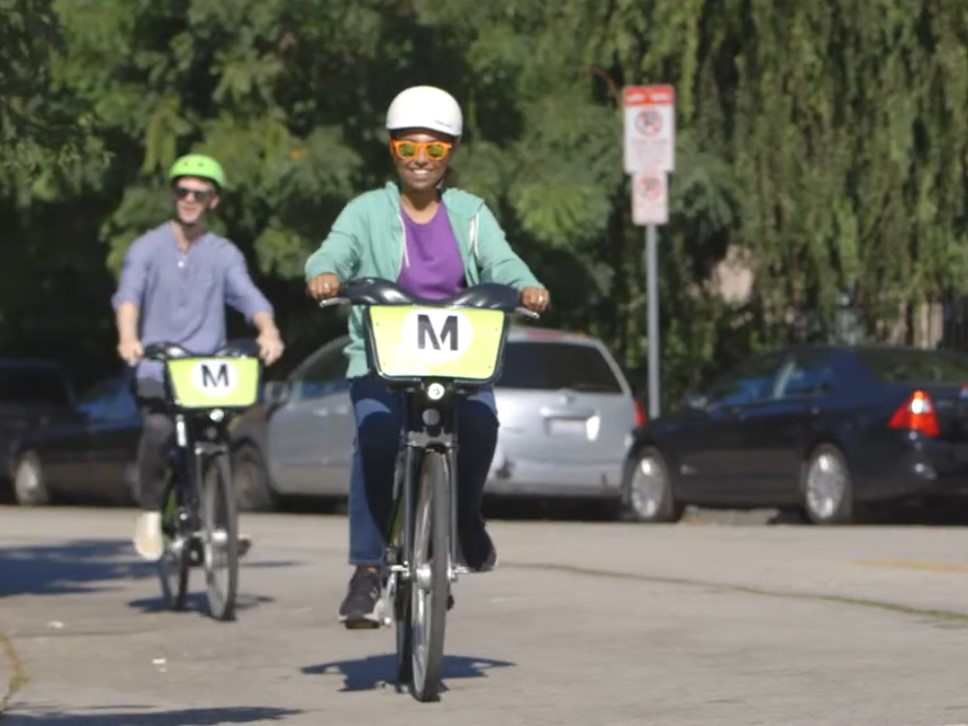Many Americans have bikes at their disposal and go for a spin at least once a year, though few bike regularly for transportation, according to a survey [PDF] conducted by Breakaway Research Group for People for Bikes, the industry-backed advocacy organization. While most Americans want to bike more, 54 percent said that fear of getting hit by a car or truck holds them back.

The findings are important because solid information about Americans' bicycling habits is hard to come by. The Census tracks only bike commuting -- and commute trips are a relatively small share of total trips. The more detailed National Household Transportation Survey is conducted infrequently and has its own set of limitations.
The results of the People for Bikes survey echo Census data in some ways and reveal similar attitudes as local surveys (Portland famously found that 60 percent of residents are "interested but concerned" about biking in traffic), but the data is unusually broad and deep, and it includes some surprises.
The responses come from an online survey of 16,000 American adults, which was then weighted to correspond to national demographics. The respondents also answered questions about the biking habits of 9,000 children ages 3 to 18 who live in the same households. The survey controlled for positive response bias by eliminating participants who said they have visited a fictional website.
Here are the big findings.
About 100 million Americans bike each year, but only about 14 million bike at least twice a week
The study found that about 34 percent of Americans over the age of three rode a bike at least once in the last year. For adults over 18, the share was a slightly smaller 29 percent. But of everyone who bikes, less than half ride more than twice a month, and just 14 percent bike at least twice a week.
Slightly more than half the people who bike made only recreational trips. About 15 percent of Americans -- or 45 million people -- made at least one bicycle trip for transportation in the last year.
The biggest obstacles to riding
There's a good deal of interest in biking among Americans, even from people who haven't logged a trip in the past year. Of everyone surveyed, 53 percent said they would like to ride more often.
The single biggest reported obstacle was concern about traffic. About 54 percent reported they are worried about being hit by a car or truck, and 46 percent said they would be more likely to ride if they could bike in areas physically separated from traffic. One of the Breakaway's main conclusions is that more bike infrastructure could be the best way to increase cycling in the U.S.
The second-biggest barrier, the survey found, is lack of access to a working bike. Only 52 percent of Americans reported they had a functioning bike available to them. Services like bike-share and bike libraries might help expand access to this group and increase total cycling activity, researchers concluded.
The bicycling gender gap may not be as big as once thought, and most transportation biking is not commuting
The survey revealed a smaller gap in cycling between men and women than the Census, which only measures commuting. The Census finds that about one in four bike commuters are women. But this survey, looking at biking trips of all kinds, found 30 percent of women had ridden a bike in the last 12 months compared to 39 percent of men. Of the people who bike, men are also somewhat more likely than women to ride twice a week or more (16 percent to 12 percent), but this still would not account for the gender discrepancy in the Census.
The survey results also reinforce the idea that the Census over-emphasizes commute trips. Breakaway found that the most common types of transportation biking trips are "traveling to and from social, recreation, or leisure activities" and "running errands or shopping." Commute trips came in third.
Other interesting findings
- A greater share of Latinos than whites or blacks had biked for both transportation and recreation in the past year.
- People with incomes under $20,000 and people with incomes over $100,000 are more likely to have ridden a bike in the past 12 months than other income groups, but people on the low end of the income spectrum bike more frequently for both transportation and recreation than others.
- Biking for transportation is most common in the western region of the country, while people in the South bike the most for recreation.





